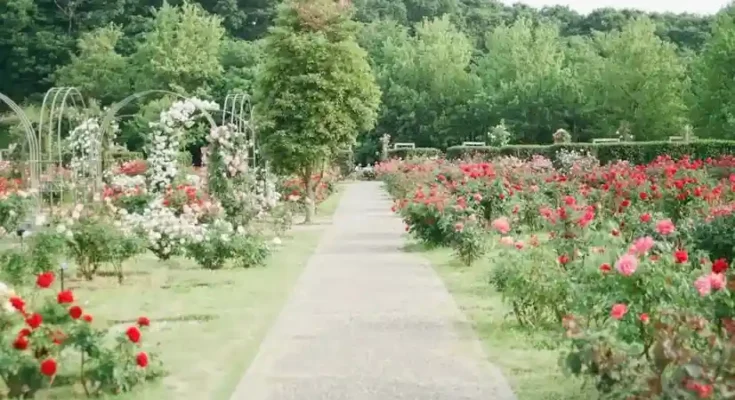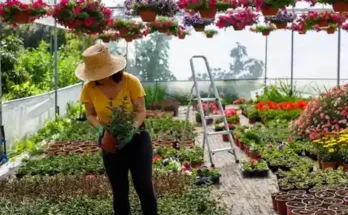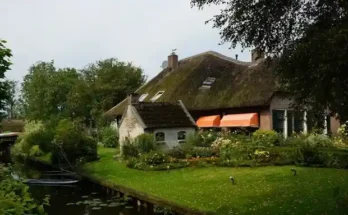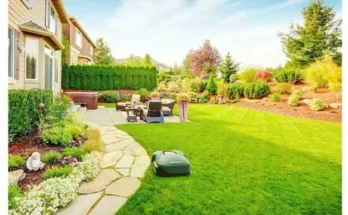The word garden often conjures simple images—rows of flowers, trimmed hedges, or a patch of tomatoes ripening under the sun. But to call a garden just a collection of plants is like calling a symphony a collection of notes. A garden is alive, breathing with the seasons, pulsing with quiet energy, and deeply intertwined with our personal rhythms. It is not only a space—it is a story, a retreat, and sometimes, a revolution.
In a world increasingly filled with noise, screens, and stress, the humble garden has become something more than ornamental. It’s emerging as a space of healing, connection, and inspiration. Whether sprawling across acres or confined to a balcony, the garden holds within it something timeless and transformational.
The Garden as a Personal Sanctuary:
-
Finding Stillness in Soil and Sunlight
There is something meditative about tending a garden. The act of planting seeds, watching them sprout, and caring for their growth is inherently grounding. It slows you down. It demands your attention. In return, it offers a kind of peace that is hard to find elsewhere. The gentle repetition of watering, pruning, and observing draws us away from our hectic mental chatter and into the present moment.
This connection with nature doesn’t require expertise. You don’t need a green thumb to experience the peace a garden brings. Even a single plant, growing on a windowsill, can soften the harsh lines of your day and remind you that life thrives in quiet places.
-
Nature’s Therapy, One Petal at a Time
Gardening has long been associated with improved mental health. Studies show that working in a garden can reduce anxiety, depression, and stress. But even without the science, anyone who has spent an afternoon in the dirt knows the soothing power of plants.
The garden listens without judgment. It doesn’t hurry you along or ask anything more than your presence. In return, it offers the slow satisfaction of watching life unfold in its own time.
Designing with Intention:
-
The Garden as a Reflection of You
A garden, like a painting or a poem, is deeply personal. Whether wild and whimsical or structured and serene, the design of a garden reflects its creator. Some people prefer the charm of an English cottage garden, overflowing with blooms and buzzing with bees. Others find solace in the clean lines and raked gravel of a Japanese Zen space.
The most beautiful gardens aren’t always those copied from magazines or Pinterest boards. They are the ones that speak to your spirit, that echo your history, and that evolve with you. A garden grows as you grow—your changing tastes, your triumphs and trials, even your moments of neglect are mirrored in its soil.
-
Harmony Between Form and Function
Gardens are increasingly designed with purpose. Whether it’s for food, wildlife, relaxation, or sustainability, every element can serve multiple roles. A flowering shrub might attract pollinators, offer privacy, and bloom with seasonal color. Herbs growing in pots are both useful and fragrant. Water features soothe the mind while offering a haven for birds.
Form follows function in the best gardens. But in great gardens, form and function dance together—creating spaces that are not only useful but deeply moving.
Cultivating Life:
-
The Joy of Edible Gardening
There is a quiet, almost rebellious joy in growing your own food. Watching a tomato ripen from a green bud to a sun-warmed treasure or harvesting fresh basil for your dinner brings a unique kind of pride. You’re not just feeding yourself—you’re participating in a cycle far older and more profound than any supermarket transaction.
Even with limited space, container gardens or vertical systems can yield herbs, salad greens, and strawberries. And in nurturing these plants, you’re reminded of something essential: life nourishes life.
-
Flavor That Starts at the Roots
Homegrown food tastes different. There’s an earthy richness, a freshness, a complexity that store-bought produce often lacks. It’s not just the flavor—it’s the context. When you’ve waited weeks for a pepper to ripen or spent mornings checking on your zucchini, the harvest becomes sacred.
And beyond taste, there’s the fulfillment of self-sufficiency, however modest. Your garden becomes your kitchen’s secret ingredient—a place where meals begin with intention and gratitude.
A Haven for Wildlife and Wonder:
-
Inviting Nature Into Your Backyard
A garden is not an island. It is part of a much larger web of life. And when you garden with nature in mind, your space becomes a sanctuary not just for yourself but for countless unseen visitors.
Planting native species, avoiding chemicals, and leaving room for wildness can attract bees, butterflies, birds, and other essential pollinators. Each visitor adds vibrancy and balance to your garden’s ecosystem, making it feel more alive and meaningful.
Watching a hummingbird hover near a blossom or a dragonfly skim the surface of a pond isn’t just charming—it’s a reminder that your garden is part of something greater than yourself.
-
Teaching the Next Generation
Gardens are rich with lessons for children—and not just about biology. They teach patience, responsibility, observation, and empathy. A child who plants a seed and watches it grow begins to understand the miracle of life in a way no textbook can convey.
In a garden, curiosity blooms as fast as the flowers. Every bug is a discovery, every sprout a celebration. And these early encounters with nature often lead to a lifelong respect for the planet and its rhythms.
The Seasons of the Garden:
-
Growing with the Cycle
No garden is static. It changes with the light, the temperature, the turning of the earth. Spring brings green shoots and promise, summer bursts with life and abundance, autumn turns reflective with fading leaves, and winter rests beneath the surface.
Living with a garden means learning to live with change. It teaches resilience, adaptability, and hope. For even when things wither, the promise of new growth lies just beneath the frost.
These seasonal shifts mirror our own lives. There are times for blossoming and times for rest. In the garden, both are honored, both are beautiful.
-
Patience
A garden will not be rushed. Seeds take time to germinate. Trees grow slowly. Blooms unfold at their own pace. In a world that demands instant results, gardening offers a counterpoint—a slow and steady journey where the process is as important as the outcome.
Learning to wait, to nurture without guarantees, to celebrate small wins—these are the quiet victories of the garden. And they often spill over into how we live, love, and work.
Conclusion:
In a time when we’re often disconnected from the earth and from ourselves, the garden stands as an invitation to reconnect. It asks us to pause, to look closely, and to participate in life’s quiet miracles. Whether it’s a sanctuary, a source of food, a creative outlet, or a family project, a garden gives back far more than it takes.
And perhaps, that’s the most beautiful thing about it. In growing a garden, we grow ourselves—not just taller or stronger, but more present, more peaceful, and more rooted in what truly matters.
So, step outside. Dig your hands into the earth. Plant something small, and let it change everything.




